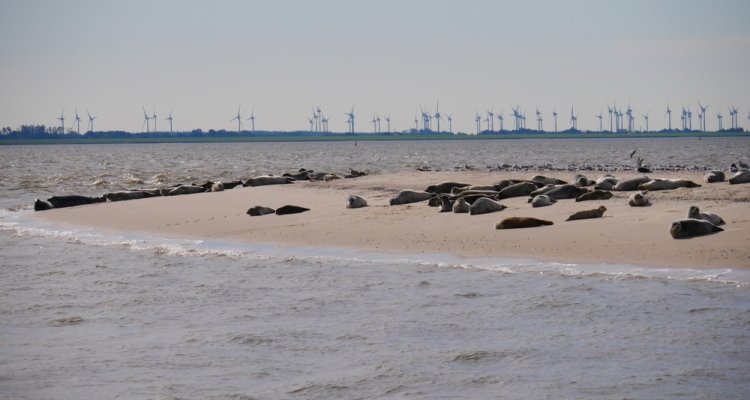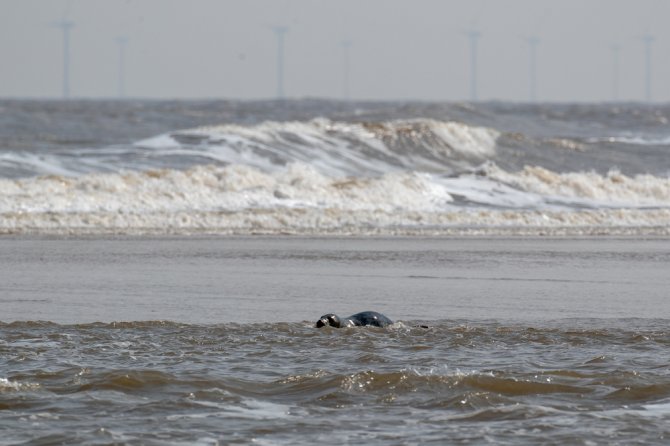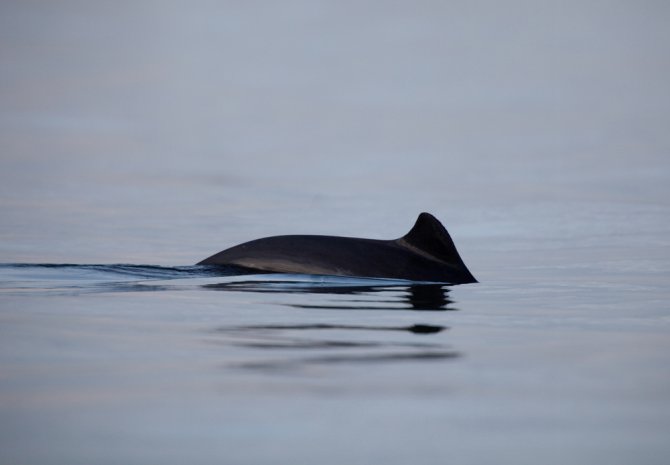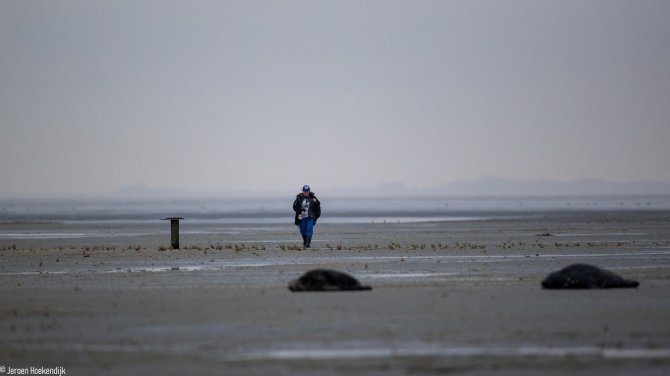
Interview
Ecological impact of wind farms on porpoises and seals
Seals and porpoises are very sensitive to underwater sounds. To what extent are they affected by offshore wind farms? Researchers at Wageningen Marine Research are investigating this using field observations and computer models, as well as satellite transmitters.
It is tempting to imagine an offshore wind farm as an ideal playground for porpoises and seals, where they would not be disturbed by the shipping and fishing activities that are so abundant elsewhere. Yet marine mammals and wind farms are not necessarily a harmonious combination, says researcher Sophie Brasseur of Wageningen Marine Research. “Many people think that noise is only a problem during wind turbine construction”, she says. “But in fact, the open sea is turned into a wind farm with entirely new structures. The building process also entails preparations and after construction there is the maintenance. Piling does indeed make a lot of noise, but that is not the only thing that may affect the animals.”
Very loud sounds, such as those resulting from piling or bomb detonation, may result in hearing damage in animals that are close by.
Well before any construction has actually begun, the shipping traffic in the area actually increases. This occurs because research vessels need to first assess the subsurface conditions of the area, using technologies such as airguns and sonar. In addition, if any lost bombs are found, they are detonated on site. The sound vibrations associated with the ships and these activities may be a nuisance to marine mammals, which have very sensitive hearing. For example, many cetaceans, such as porpoises and dolphins, are known to use sound to locate their prey and communicate with each other. “Although less research has been done on seals, we do know that they have very acute hearing”, says Brasseur. “Very loud sounds, such as those resulting from piling or bomb detonation, may result in hearing damage in animals that are close by. More modest sounds may affect the animals’ behaviour. Since sounds carry very far underwater, this concerns a large area and hence potentially many animals. Following the piling phase, the animals are faced with offshore traffic during the construction of the wind turbines and the laying of the cables, and, over many years thereafter from the actual operation of the park, due to maintenance ships frequenting the area.”

An accurate picture
In the context of the Offshore Wind Ecological Programme (Wozep), Brasseur and her colleagues are investigating how all these activities might translate into changes in the North Sea’s seal and harbour porpoise populations. “If there is an impact, we would like to be able to demonstrate the underlying mechanisms”, she explains. “Are animals in offshore wind farms forced to alter their feeding behaviour? Are there changes in fish composition? Do they get disoriented by the pile driving? Has the area become too fragmented, and are their migration routes disrupted? Or can the animals easily adjust to all of these changes?”
Seals are easier to study than porpoises, explains Brasseur. “Seals swim and forage in the North Sea”, she says, “but they come ashore regularly, where we can count them with great accuracy. This gives us a fairly accurate picture of of both adult and pup numbers. All of this is much more difficult with porpoises.”
A rough estimate
There are an estimated 120,000 gray seals and 40,000 harbour seals in the North Sea. The sandbanks along the Dutch coasts host around 10,000 harbour seals and 8,000 gray seals. “There are approximately 350,000 harbour porpoises in the North Sea”, adds Brasseur, “but this is a rough estimate. It takes a huge research effort to try to count them systematically.”
For this, the researchers depend entirely on counting the porpoises along substantial transects, using ships or airplanes. Only the porpoises at the water surface can be seen and counted. Brasseur: “Based on complicated calculations, we can estimate how many there are in total. But those estimates have large margins of error.”
However, counting seals is also complicated. “For example, we know that some harbour seals swim and forage in our waters, but leave for Germany to have their young”, she says. “In gray seals, on the other hand, we mainly observe such exchanges with the United Kingdom.”
Shared populations
In other words, we cannot really speak of the seals or porpoises as exclusively ‘our’ marine mammals, Brasseur points out: the populations are shared with our neighbouring countries. This means that we have a broader responsibility when it comes to protecting the populations. For example, disruptions that take place in the Dutch coastal zone, such as from wind farm construction, are also relevant for our neighbours.

“The movements of porpoises are less well-known”, emphasises the researcher. “Perhaps there are groups that, like the seals, are site-faithfull and therefore more vulnerable to disturbance from wind farms, while other groups only traverse the area.”
Behavioural change
For several years, the Wageningen researchers have been fitting seals with transmitters. “We glue them onto the fur, so that they will be shed after a while, together with the hairs”, explains Brasseur. “We have no indication that this affects the animals’ survival.” Among other things, the transmitters register an animal’s location, diving depth and duration and the time spent on the shore. “Since 2005, we have tagged 300 harbour seals and 100 gray seals. This gives us a fairly good idea of how the seals use their environment. Now the trick is to find out how this is affected by human use.”
At least we can objectively establish that the seals seem to avoid the wind farms.
The first Dutch offshore wind farm was constructed near Egmond, in 2004; Germany and Denmark followed a few years later. Are seals indeed negatively affected by wind farm-associated activities? “Negative impact is a complicated concept”, Brasseur replies, “also because other changes have been taking place during that time. For example, populations are still increasing thanks to the ban on hunting. But at the very least, we can objectively establish that the seals seldom enter the wind farms. Most seals swim away during piling – but is this because they already intended to leave or is this a direct result of construction activities? In addition, during pile driving, we observe that seals no longer dive straight down like they do when foraging, and they spend less time at the seafloor.”
Knowledge-based decision-making
Behavioural changes can be observed even tens of kilometres away from the source of the disturbance. Brasseur: “We are now trying to establish exactly how far that influence extends.” It makes a huge difference whether this distance is 20 or 40 km. A circle with a radius of 40 km is four times larger in area than one with a radius half that length. Consequently, this fourfold increase in total area means that many more animals could potentially be affected by the noise.

“We are still in the process of interpreting the data”, says Brasseur. “For instance, we would like to know whether the change in diving behaviour is an indicator of less efficient foraging.” Initial calculations, however, already indicate that seals are affected by human influences over a much larger area than previously thought. “So far, the focus has been on potential hearing damage relatively close to wind farms”, says the researcher, “but if long-term behavioural changes also affect the animals’ chance of survival, a much larger part of the population may be affected, and over a much longer period of time.”
Even though it is still difficult to define how marine mammals are affected by the wind farms, Brasseur concludes that a systematic inventory of potential impacts is of paramount importance. “This calls for additional research, particularly to establish how the animals are affected before and after pile driving, and whether – and how – they use the waters in and around offshore farms”, she states. “How much impact you accept, and at which distances, is a political choice. But policymakers should be able to make that choice based on the best possible knowledge.”